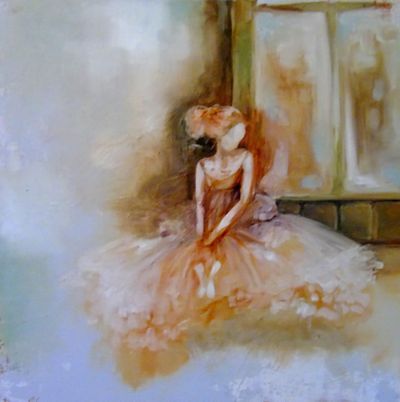Artist’s work reflects family’s influence
Creatures dominate Smith’s paintings

Her Montana mother and grandmother and great- grandparents and great-aunts and aunts – they were all artists, passing along what they knew about painting, sculpture and drawing from one to another.
But never as “work.” Art wasn’t something you made for a living for Shana Smith’s older relatives. Still, as a child, she heeded what they taught her. “That’s not how you draw a face,” one might offer as they sat together, and tutor her on where the eyes go.
Now Smith, 33, is a working artist, the memory of her relatives still helping to guide her hands. (Yes, that’s hands – she’s ambidextrous, able to write and paint with both.) A painter with a fine-arts degree from University of Montana, Smith moved in February to Spokane to join a “more expandable” art community than she had in Western Montana. Her first show in Spokane is up tonight at Urbanna Natural Spa, Salon & Wine.
Linda Biel, the spa’s owner, said the show is meant to showcase Smith’s work but also to welcome her to Spokane. Biel said she admired the colors and detail in Smith’s paintings: “Every one of them are wow.”
The work in Smith’s show bears her family’s marks.
“Even today I’ll be painting something, and I’ll see a little special moment that reminds me of my grandmother, and I’ll think, ‘She was here for that,’ ” Smith said. “I see their hand in my artwork in almost every painting I do. The way I write, the way my hand moves, I feel like comes from them.”
Smith paints people and animals, more recently more animals – big, muscular ones such as buffalo and elk, a shift for an artist who’d always joked she’d never “paint an elk down by the river drinking water.” The emphasis on animals was a result of popular demand in Western Montana, Smith said, where would-be patrons considered her human portraits too dark to hang in their homes.
“People kept saying, ‘Paint something that we like,’ ” she said. “I got known for painting, but nobody wanted to buy paintings of motorcycle crash victims.”
Smith found a way to approach animal paintings the way she approached paintings of people, “where I could try and capture the animal’s spirit and soul.” One of her favorite pieces, she said, portrays an elk. Drinking water. Down by the river.
Living in Spokane, what she wants to paint is changing again, she said. She’s been working on paintings of figures that might be “marionettes without strings.” The viewer doesn’t necessarily know whether the subjects are puppets or real women.
She has a spot near a bridge where she wants to set up and paint, the trains that run through the city have her attention, too. She said a cityscape is coming soon.
As her subjects change, her family’s influence remains. She said she remembers one bit of advice, often repeated by her late grandmother Adeline Pokoik, when she’s trying to decide whether a painting is finished. It compels her to stop earlier than she might have.
Her grandmother told her: “When it looks good, it’s done.”